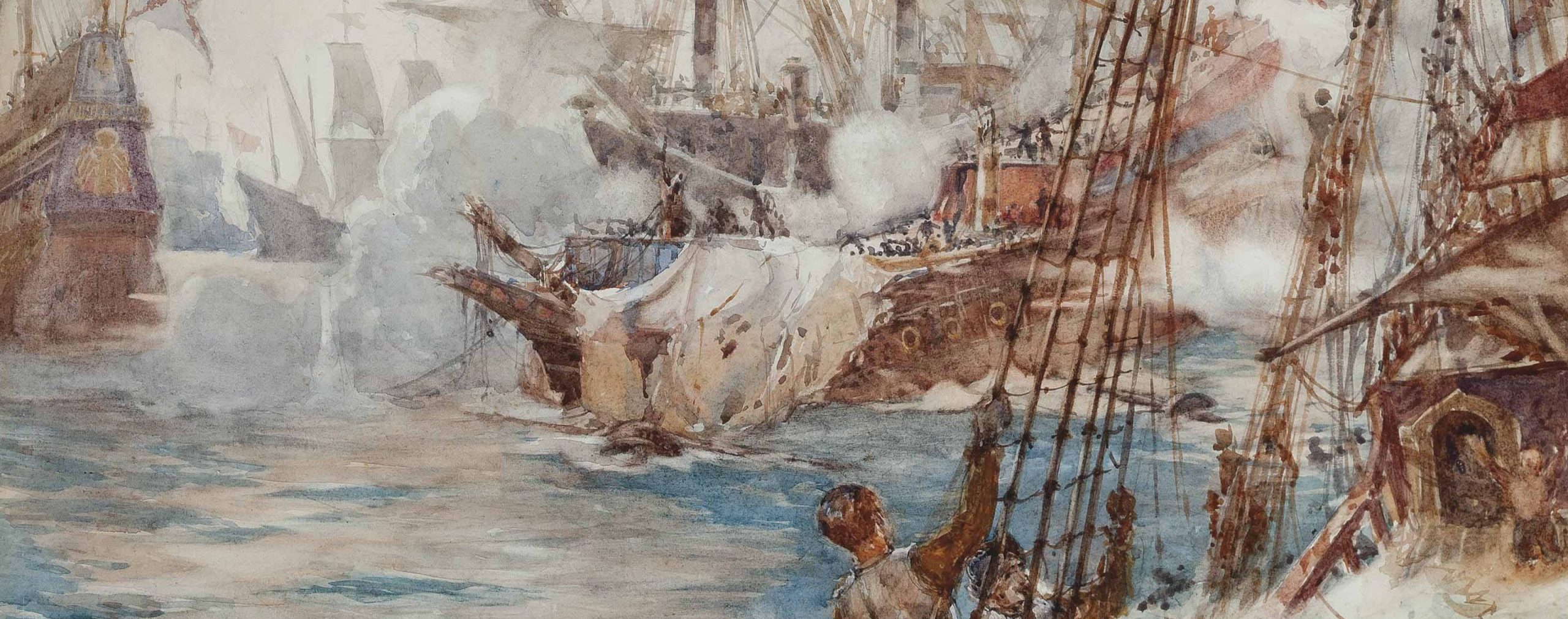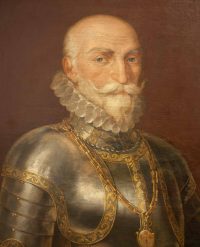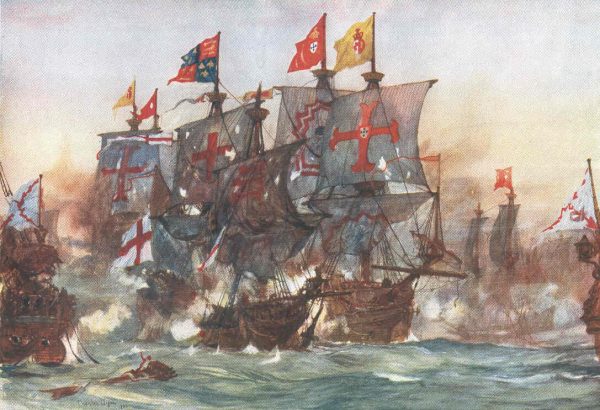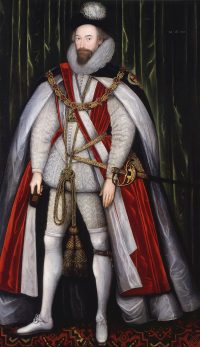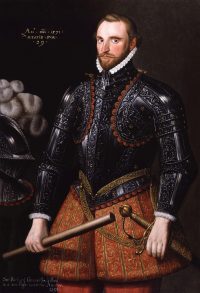Source:ABC
The Battle of Flores Island, on 9 September of that year, was one of the most famous actions in the struggle for dominance of the Atlantic, in which 55 Spanish ships commanded by Alonso se Bazán surprised and drove off another 22 British ships in the Azores
One of the most controversial and famous episodes of the long struggle between Spain and England for control of the Atlantic between 1568 and 1604 is the battle of the island of Flores on 9 September 1591. A total of 55 Spanish ships under the command of Alonso de Bazán surprised and drove off another 22 British ships under Thomas Howard, 1st Earl of Suffolk, who was trying to seize the large and very rich Indies Fleet as it passed through the Azores.
For the English navy, it was a major setback that cost them the life of one of their most famous ships, the Revenge, the flagship of Francis Drake, a born plunderer and eternal headache for the Spanish monarchy in the 16th century.
The brave and unsuccessful defence of the famous galleon was led by Richard Grenville, in a controversial episode that has been valued very differently depending on who told the story. But was it a heroic act by the English captain against the Spaniards or, on the contrary, a brilliant operation by the Spanish sailor Alonso de Bazán that British historiography has sought to take away from Spain?
The battle of the island of Flores has indeed been sung by Britain’s greatest poets, even though it ended in defeat. Even so, it has gone down in the annals of the Royal Navy as one of the most astonishing actions in its long and glorious history. In the handbook Historia general de España, published by the historian Modesto Lafuente in 1850, the view of the events is very different: “In 1591, an English fleet of fifty sail under the command of the Earl of Cumberland was sent to the Azores, with the aim of waiting for the Spanish ships coming from the Indies and seizing them. But discovered and rammed by the galleons of Don Alonso de Bazán, who had left Ferrol to give chase, several of his ships were wrecked, leaving others badly damaged and Cumberland’s fleeing under a fierce storm and the shadows of the night”.
A very similar approach is maintained today by the writer and historian Víctor San Juan in his latest book Veintidós derrotas navales de los británicos, now republished by Renacimiento, in which he describes this and other episodes of the all-powerful Royal Navy. “British historiography has always tried to devalue the loss of the Revenge, downplaying it as an individual combat. In other words, an exception to the rule that resulted in a heroic but adverse outcome. When, in fact, it was merely the most conspicuous part of a carefully planned ambush by the victorious British sailors […]. But on this occasion, the Spanish and Portuguese were able to react, putting their enemies to flight and taking the most important ship in their squadron. A complete British defeat that history has tried to conceal”, the author argues.
The Revenge, against Spain
What really happened? Can both versions of the same event be maintained? In 1591, the English believed that Spain had definitively lost its dominance at sea. For this reason they armed a fleet in name of Queen Elizabeth I to intercept the Spanish fleet carrying the treasure of the Indies. The Revenge was one of six heavily armed galleons, displacing more than 500 tons, that they sent. The others were the Defiance, Sans Pareil, Bonaventure, Lion and Prévoyance. And in command of them all was Howard, an old acquaintance from his participation in various assaults and battles against the Spanish.
Among their ranks was the aforementioned Grenville, who at the time was in charge of captaining the Revenge. By this time, this famous English galleon had already been involved in the most notable campaigns of the Anglo-Spanish conflict during her 15 years of life: the landing at Dingle in 1579, the attack on Cadiz in 1587, the campaign of the Spanish Armada the following year and the Counter Armada of 1589, ending with the ambush of the Azores in 1591.
It was a ship 40 metres long and almost ten metres wide, armed with less than half a hundred cannons. These characteristics gave it great speed and manoeuvrability for what was common at the time, which made it stand out from other warships. Grenville, on the other hand, was a veteran English soldier, shipowner and Member of Parliament who, twenty years earlier, had fought against the Turks in Central Europe. And who, a decade earlier, had gone to the New World to see the fledgling American colonies. “In 1588 he contributed three ships to the campaign against the Spanish Armada and now he was reaping the fruits of his generosity, even though, as a sailor and privateer, his only notable quality was to have developed, over the years, a visceral hatred of the Spanish that would ultimately seal his end and that of the Revenge”, argues San Juan.
The hunted hunter
The British spent six months waiting in the Azores for the passage of the Fleet of the Indies. With news of their plan, the Spaniards made their own preparations to hunt them down. Alonso de Bazán commanded the fleet that set out in pursuit. It consisted of a large nucleus of 16 galleons and five ships owned by the Crown, which had an overall tonnage of 12,490 tons and were armed with 448 pieces of artillery. These were joined by a further 12 ships, five pataches, six zabras and a private caravel with a further 274 pieces of artillery. All these ships were manned by 7,200 men, including sailors and infantry.
On 30 August 1591, the British saw a sea of sails appear on the horizon, which they thought was the expected Indies Fleet. Little did they realise that it was in fact Alonso de Bazán’s mighty fleet, which Spain had managed to assemble only three years after the disaster of the Spanish Armada. But as the disproportion of forces was evident, Howard set off with his ships to try to gain windward to the right of the Spaniards, to avoid boarding, and fled under full sail while being pursued by the Spanish ships with cannon fire until night fell. An urgent decision by the British, who knew that the hunter had every chance of being caught.
Something must have gone through the mind of Grenville, the English hero of the Battle of Flores, the southernmost island of the Azores, because he disregarded the orders of his superiors and, instead offleeing, decided to hold his position and confront the Spaniards on his own. A clearly irrational decision, in which the English vice-admiral set himself up as something like the David who wanted to confront Goliath. The English chronicles speak of a “display of gallantry”, although he seemed more like a kamikaze.
Grenville, alone in battle
When the Revenge came under fire, Bazán ordered part of his squadron to throw all their forces into the attack in order to finish off the famous ship as soon as possible. In the meantime, he sent the galleons San Pablo, San Martín, San Felipe and San Bartolomé, as well as eight other fluyts, in pursuit of the rest of the Royal Navy to prevent it from fleeing. Grenville continued to face the Spaniards alone, even when the ships escorting him had also abandoned their positions, leaving him on his own.
Some English chronicles recount that the Revenge, in initiating the engagement, sank one ship and disabled another. “For a medium-sized galleon of only 50 guns to sink a ship witheringly”, explains San Juan, “this had to be small and light. We can conjecture that it was one of the zabras or the pataches of the vanguard of the Spanish navy, which entertained the fiery Grenville long enough for larger ships to arrive to confront it”.
In the end there was no victory for the English, who, besieged as they were on all sides, fell to the Spanish troops. As expected, the Revenge was captured at nightfall after being surrounded by three Spanish galleons. Grenville lowered his flag and was boarded by the Spanish navy vessels. His ship was completely dismasted, with her dead ship’s work in tatters, her hull in a very bad state, and almost half of her defenders dead or seriously wounded. Among them was the same “suicidal” vice-admiral who had been hit by an arquebus shot. He was captured and died a few hours later on board the San Pablo. As recounted in Veintidós derrotas navales de los británicos, his last words were: “I have ended my life as a true soldier who has fought for his country, his queen, his religion and his honour.”
On the Spanish side, approximately 100 soldiers and sailors perished due to the sinking of the galleon Ascensión and the flag ship of Coutinho. Nevertheless, on that day Spain showed Queen Elizabeth I that she was no longer willing to suffer the plunder of her infamous corsairs. Moreover, the Revenge went on to fly King Felipe’s flag in company with the San Juan and La Caridad. But, lo and behold, as if the English galleon could not bear to serve the enemy, five days after her capture she sank in a storm.
Thus concludes the controversial episode of the capture of the Revenge, which the British, counting it as an isolated episode of the Anglo-Spanish war, wanted to disguise it as a heroic and punctual act of Richard Grenville throughout the four centuries that had elapsed. They always wanted it to be the final act of one of the most important ships in British naval history.
Share this article
On This Day
No Events
History of Spain
26 August 2020
27 January 2021
Communism: Now and Then
23 December 2022
28 July 2021
